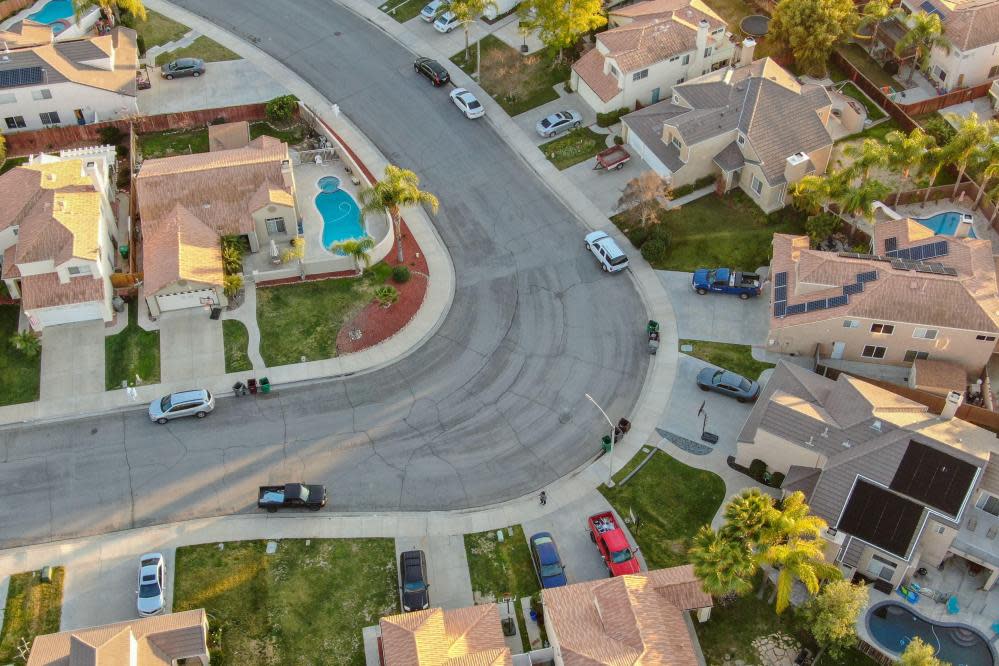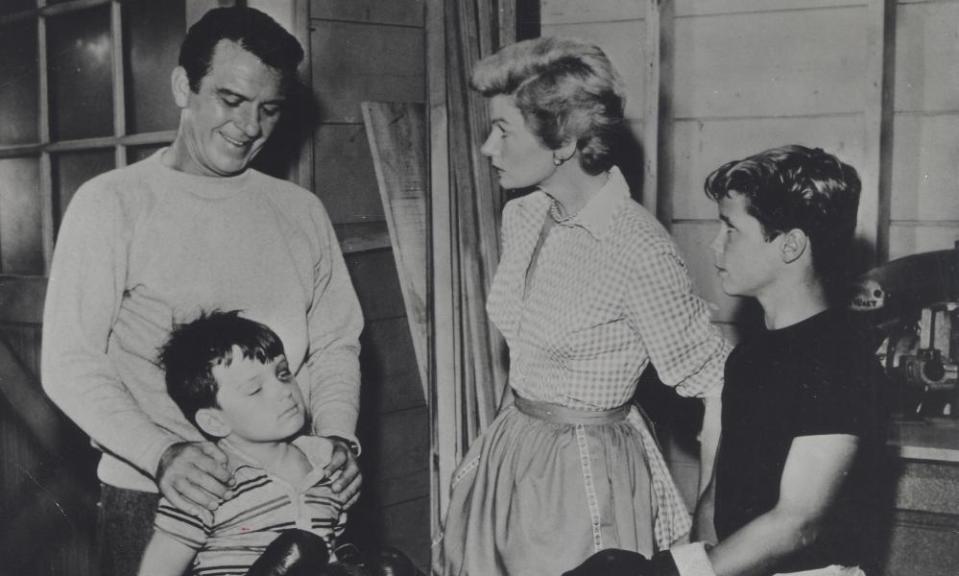Donald Trump stokes racial fears with appeal to white suburban voters

Donald Trump on Wednesday said Americans “living their Suburban Lifestyle Dream” will no longer be “bothered” by low-income housing in their communities, an explicit effort to stoke racial fears among affluent, white voters who are abandoning the Republican party under his leadership.
The remark is part of a pattern from the US president as he tries to rebuild his standing in the suburbs, which has cratered amid his administration’s failure to contain the coronavirus pandemic, the ensuing economic crisis, as well as the president’s aggressive response to the nationwide protests against systemic racism, which polls suggest most Americans support.
“I am happy to inform all of the people living their Suburban Lifestyle Dream that you will no longer be bothered or financially hurt by having low income housing built in your neighborhood….,” Trump tweeted, as he traveled to Texas on Wednesday. “Your housing prices will go up based on the market, and crime will go down. I have rescinded the Obama-Biden AFFH Rule. Enjoy!”
The tweet references the Affirmatively Furthering Fair Housing, an Obama-era program designed to reduce racial segregation in American suburbs.
The rule, implemented in 2015, requires cities and towns that receive federal funding to identify patterns of racial bias and take corrective action to address disparities. It built on the Fair Housing Act, the 1968 civil rights legislation which prohibits residential discrimination but has yet to achieve its broader goal of fostering integration.
Last week, the administration announced it would rescind the program, agreeing with conservative critics that the fair-housing policy amounted to federal overreach into local communities.
In the announcement, the housing and urban development secretary, Ben Carson, called the program “complicated, costly and ineffective” and said it would be replaced by a new rule, called “Preserving Community and Neighborhood Choice”.
Trump had previewed his administration’s plan to gut the policy earlier this month, a day after he posted a video of an angry, white couple who brandished firearms in the direction of protesters who marched past their mansion inside a gated community in St Louis. The couple were later charged with unlawful use of a weapon.
Speaking at the Double Eagle Energy oil rig in Midland, Texas, on Wednesday, Trump touted his decision to end the fair-housing policy, claiming: “It’s been hell for suburbia.”
In a statement, Biden slammed Trump’s travel to Texas, which is grappling with one of the country’s worst outbreaks as Hurricane Hanna batters the south-east corner of the state.
“Now isn’t the time for politicking or photo ops,” Biden said. “Texans need a president with the experience and vision to fight for families no matter how many catastrophes reach our shores.”
But there are signs Trump’s nostalgia for a bygone era isn’t resonating with Americans who increasingly say they are alarmed by racial discrimination. These shifts are changing the political landscape of once-conservative states like Texas.
In 2018, voters in the suburbs of Houston, San Antonio and Austin helped fuel historic Democratic gains in a number of counties and districts that voted Republican just two years before. A recent Quinnipiac poll of Texas voters found Trump and Biden locked in a statistical tie.
Once a cornerstone of the Republican base, suburban voters and particularly suburban women will probably play a crucial role in determining control of the Senate and White House.
Democrats gained control of the House in 2018’s midterm elections by storming through once-Republican districts from California and Texas to Virginia and Georgia. Current polling shows Joe Biden, the presumptive Democratic nominee, buoyed in part by his support from college-educated women and suburban voters.
An ABC News/Washington Post poll found Biden ahead of Trump by nine percentage points among suburbanites. Among suburban women, Biden led Trump by a margin of 60% to 36%. By contrast, Biden narrowly edges past Trump among suburban men, 49% to 45%.
In recent weeks, Trump has shed any semblance of subtlety in his appeals to the skeptical residents of America’s bedroom communities.

“The Suburban Housewives of America must read this article,” Trump tweeted last week, sharing a New York Post op-ed by the former New York lieutenant governor Betsy McCaughey, which argued that Biden’s housing plans threaten the “value of their new home, the size of their property tax bill and the character of the town they now call home”.
Trump offers a caricature of the suburbs that appears to be ripped from Leave It to Beaver, the 1950s sitcom about a white, middle-class American family. But this image is detached from the current reality of suburban America, which has changed politically and demographically in the past few decades.
Immigrants and people of color have moved to the suburbs, diversifying communities that were once predominantly white. Meanwhile, college-educated voters – and particularly white women – have migrated from the Republican party, part of a gradual political realignment that Trump has helped to accelerate.

 Yahoo News
Yahoo News 
